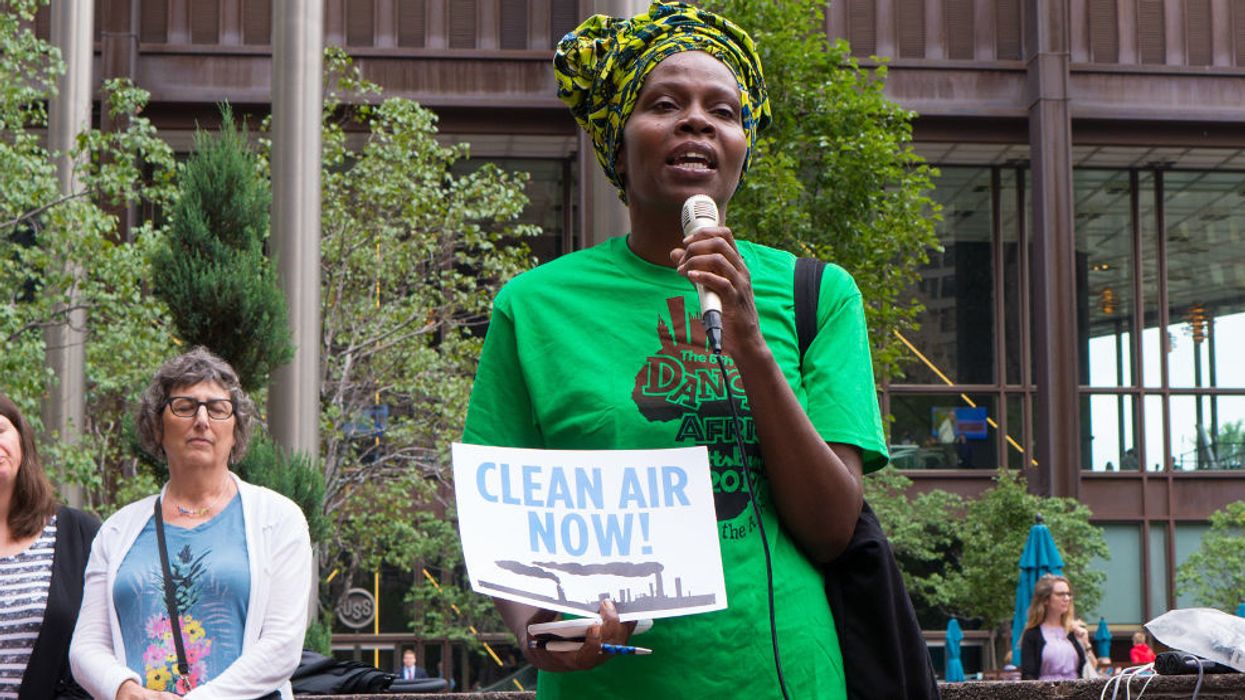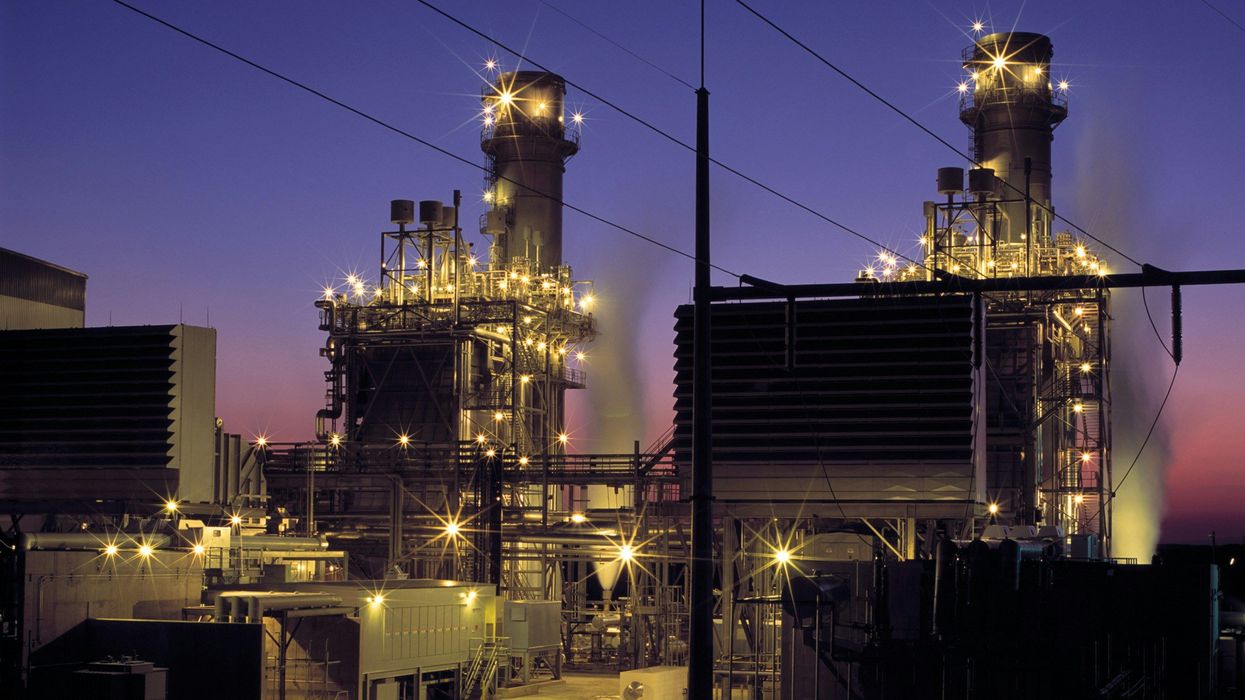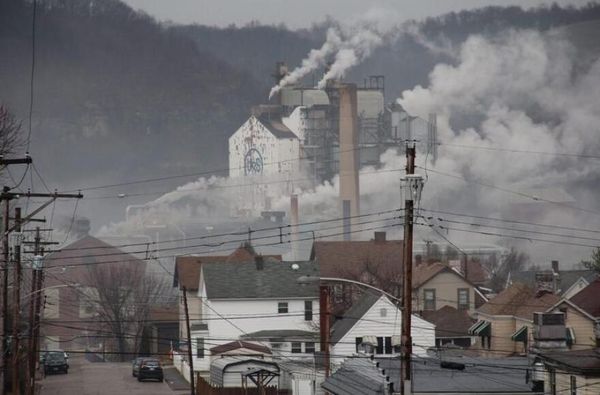PITTSBURGH—Environmental groups are calling on the local health department to seek federal funding for additional monitoring of benzene, a cancer-causing chemical, near one of the region's most notorious sources of air pollution.
Benzene is a colorless, flammable liquid that's found in tobacco smoke, vehicle exhaust, gas station fumes, adhesives, and industrial emissions. It is one of the 20 most commonly used chemicals in the U.S., but exposure can cause leukemia and other cancers, and the World Health Organization states that there is "no safe level of exposure" to benzene.
In the Pittsburgh region, a major source of benzene exposure is coke oven emissions from U.S. Steel's Clairton Coke Works, which accounted for 80 percent of all benzene emissions in Allegheny County in 2018. In addition to increasing cancer risk, air pollution from Clairton Coke Works also puts nearby residents at greater risk of severe illness from novel coronavirus and its resulting disease COVID-19.
Allegheny County has some of the worst air quality in the country. It regularly receives all F's on the American Lung Association's air quality report, and is in the top 2 percent of all U.S. counties for risk of cancer caused by air pollution. Many of the cancers that occur at the highest rates in the county have been linked to air pollution.

U.S. Steel's Clairton Coke Works accounted for 80 percent of all benzene emissions in Allegheny County in 2018. (Credit: Mark Dixon/flickr)
The Group Against Smog and Pollution (GASP), a local health advocacy group, has long urged the Allegheny County Health Department, which oversees air quality in the region, to step up benzene monitoring and coke oven regulations in the region. They're now redoubling those efforts, in part because the U.S. The Environmental Protection Agency (EPA) recently extended the deadline to apply for air monitoring funding due to delays caused by the coronavirus pandemic.
"The EPA specifically calls out their interest in monitoring projects that focus on benzene," GASP's executive director Rachel Filippini told EHN. "Knowing this, [Allegheny County Health Department] should apply for funding to expand benzene monitoring so it can better understand the potential human exposure to emissions from Clairton Coke, the largest source of benzene in the county."
The EPA is offering funding for air toxics monitoring, with a special focus on benzene, under its Community-Scale Air Toxics Ambient Monitoring grant program. The agency plans on making 10 to 20 grants of up to $750,000. GASP has launched a petition urging the department to apply for one of those grants.
The Allegheny County Health Department already measures benzene and other air toxics at one site in downtown Pittsburgh and one site near the Clairton Coke Works (the Liberty Monitor). The Liberty Monitor consistently shows the highest readings of most air toxics, including benzene, often at levels higher than are considered safe in ambient air. Additional monitoring sites around the facility would give health officials stronger data on emissions at the site that could be used to more quickly enforce health-protective regulations.
The organization hopes the Allegheny County Health Department will follow a recent air monitoring roll-out executed in Erie, Pennsylvania. Last summer, the Pennsylvania Department of Environmental Protection (DEP) set up 13 air toxic monitoring sites around the fenceline of the now-closed Erie Coke plant, 145 miles north of the Clairton Coke Works plant. Like Clairton Coke Works, Erie Coke had a long history of facing fines and lawsuits over its frequent violation of clean air laws.
With data from those sites, the DEP publicly reported the levels of not only benzene, but also other carcinogens including toluene, ethylbenzene, and xylene coming from the plant. The monitors made it possible to see a dramatic drop in air pollutants like benzene in communities near the plant following its closure in December 2019.
"The health department's counterpart at the state level is undertaking this kind of monitoring right now, and implementing it here would be a perfect fit for [the Health Department] and the community," Filippini said in a blog post published by GASP.
The Health Department has not yet committed to applying for the funding.
"We are continuing to evaluate options, but have nothing to share at this time," Jim Kelly, Deputy Director of the Allegheny County Health Department, told EHN. "As is our charge, we are, on an ongoing basis, looking at air quality and impacts in line with any decisions."
Banner photo: Community members rallying for clean air in June 2019 after a U.S. Steel Clairton Coke Works fire. (Credit: Mark Dixon/flickr)


























